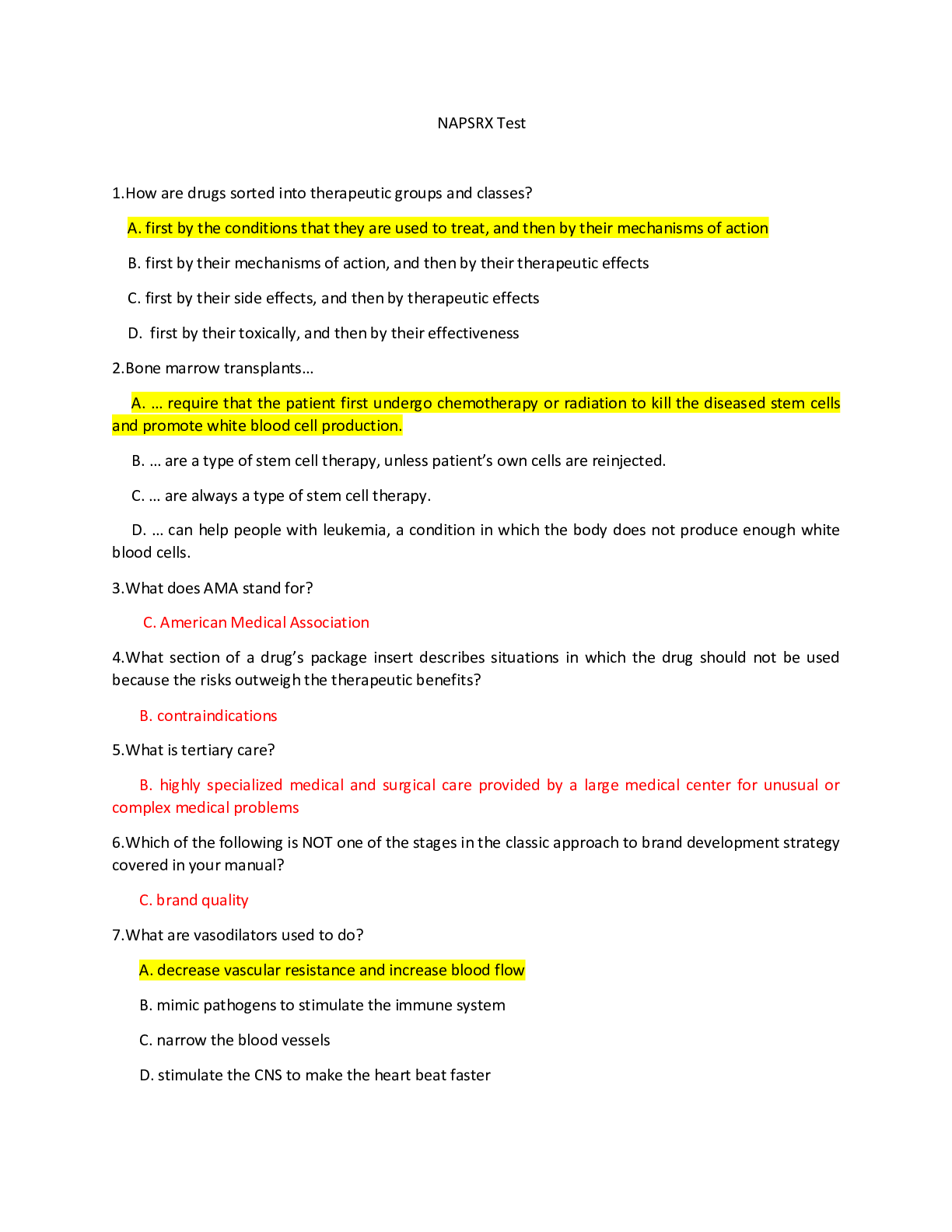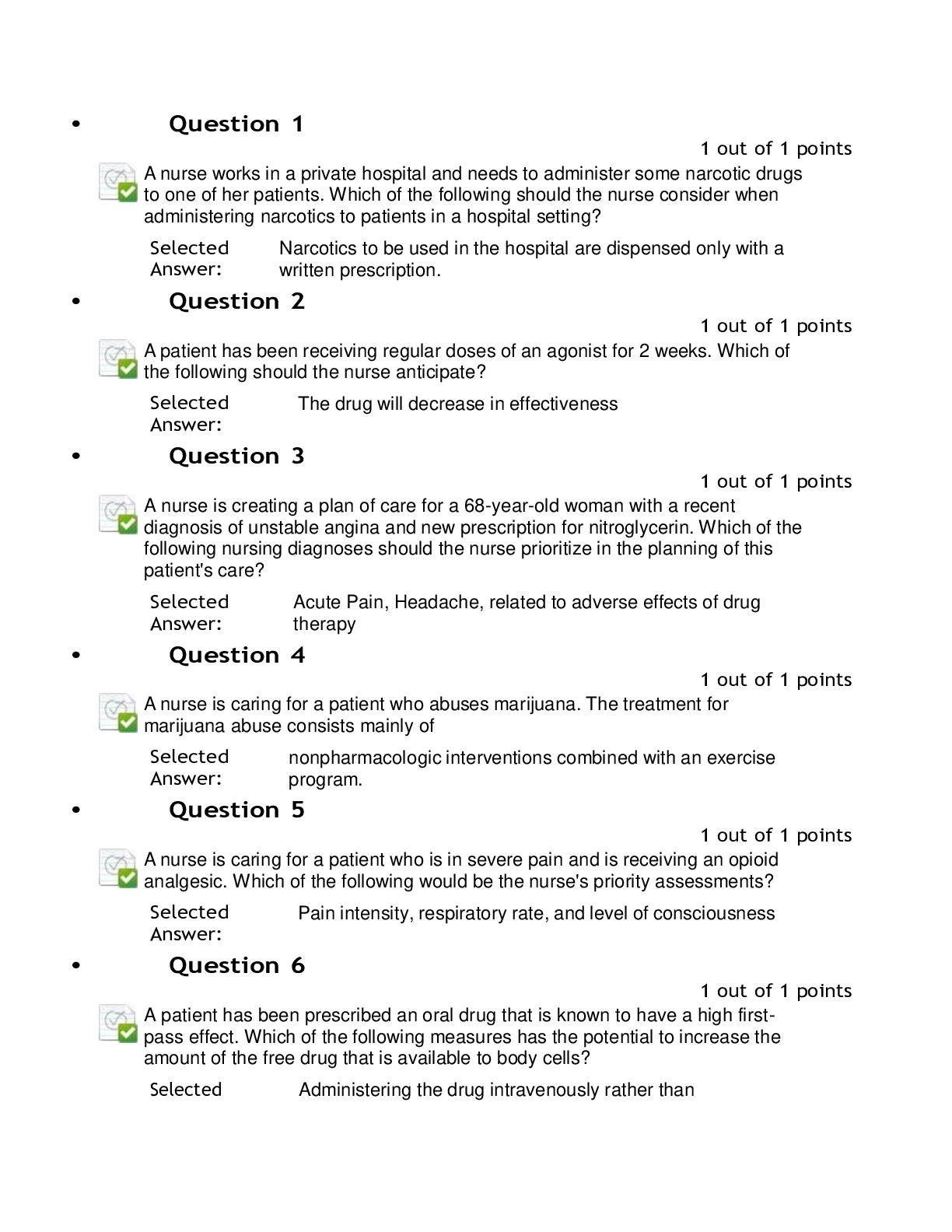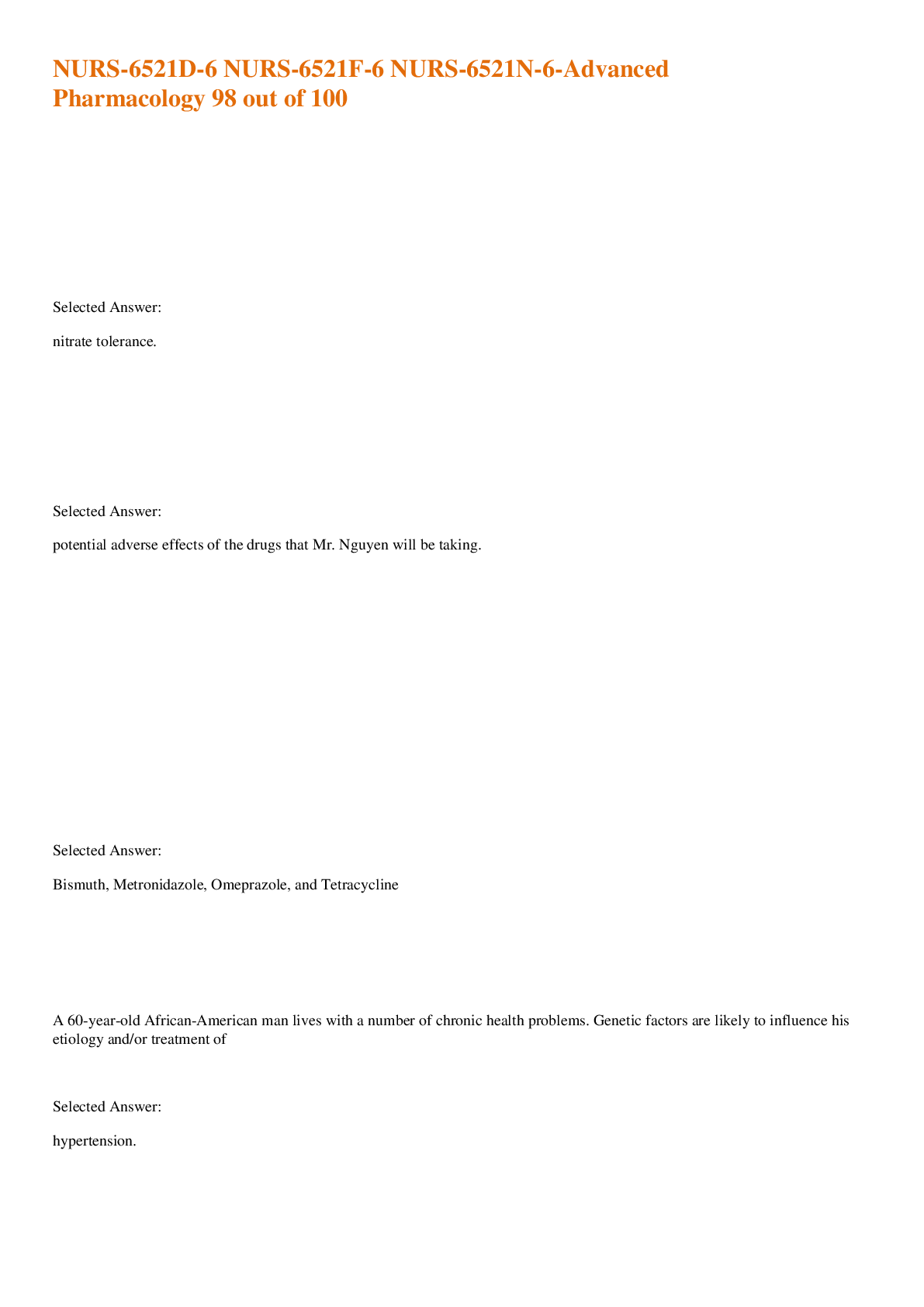Health Care > EXAM > ATLS 10 Advanced Trauma Life Support POST-TEST WITH QUESTIONS AND ANSWERS. LATEST UPDATE (All)
ATLS 10 Advanced Trauma Life Support POST-TEST WITH QUESTIONS AND ANSWERS. LATEST UPDATE
Document Content and Description Below
ATLS 10 Advanced Trauma Life Support POST-TEST WITH QUESTIONS AND ANSWERS. LATEST UPDATE.ATLS10 exam questions with answers (answers outlined!!) 1. A 24-year-old male pedestrian, struck by an autom... obile, is admitted to the emergency department 1 hour after injury. His blood pressure is 80/60 mmHg, heart rate 140 beats per minute and respiratory rate is 36 per minute. He is lethargic. Oxygen is delivered via face mask, and two large-caliber IVs are initiated. Arterial blood gases are obtained. His PaO2 is 118 mmHg (15.7 kPa), PaCO2 is 30 mmHg (4.0 kPa), and pH is7.21. The treatment of his acid-base disorder is best accomplished by: a. Hyperventilation b. Restoration of normal perfusion c. Initiation of low-dose dopamine d. Administration of sodium bicarbonate e. Initiation of phenylepinephrine infusion 2. The highest priority in managing a patient whose injuries include closed extremity fractures is: a. Assesing limb perfusion b. Preventing necrosis of the skin c. Decompressing compartment syndrome d. Addressing respiratory insufficiency Identifying crush syndrome 3. A 34-year-old female is involved in a motor vehicle crash is brought to the emergency department. She is talking, but her voice is hoarse and on exposure she has diagonal bruising of the chest and anterior neck. What is the next step? a. Direct laryngoscopy to exclude laryngeal trauma b. Oxygen by non-rebreathing mask c. Protecting the spine by making her lie down d. Palpation of the anterior neck e. Attaching a pulse oximeter to her finger 4. A 30-year-old male sustains a gunshot wound to the right lower chest, midway between the nipple and the costal margin. He is brought by ambulance to a hospital that has full surgical capabilities. In the emergency department he is endotracheally intubated, fluid resuscitation is initiated through two large-caliber IV lines, and a closed tube thoracostomy is performed, with the return of 200 ml of blood. A chest x-ray reveals correct placement of the chest tube and a small residual hemothorax. His blodd pressure is now 70/0 mmHg, and his heart rate is 140 beats per minute. His hypotension is most likely due to: a. Tension pneumothorax b. Massive hemothorax c. Pericardial tamponade d. Intraabdominal bleeding e. Insufficient isotonic crystalloid infusion 5. A 20-year-old athlete is involved in a motorcycle crash after having ridden for hours on a very hot day. When he arrives in the emergency department, he shouts that he cannot move his legs. On physical examination, there are no abnormalities of the chest, abdomen, or pelvis. The patient has no sensation in his legs and cannot move them, but his arms are moving. The patient’s respiratory rate is 22, heart rate is 88, and blood pressure is 80/60 mmHg. He is pale and sweaty. What is the most likely cause of his hypotension? a. Neurogenic shock b. Cardiac tamponade c. Myocardial contusion d. Hyperthermia e. Hemorrhagic shock 6. Comapred with adults, children have: a. A longer, wider, funnel-shaped airway b. A less pliable, calcified skeleton c. Greater mobility of mediastinal structures d. A relatively smaller head and larger jaw e. Anterior displacement of C5 on C6 7. Which one of the findings below requires a definitive airway in trauma patients? a. Facial lacerations b. Repeated vomiting c. Partial thickness facial burns, cough, and hoarseness d. Sternal fracture e. Glascow Coma Scale score of 12 8. In a patient with spinal cord injury, sacral sparing: a. Refers to a fracure of the sacrum b. Is part of the spinal shock syndrome c. Is a good prognostic sign d. Indicates a complete spinal cord injury e. Occurs only with complete transection of the lumbosacral spinal cord 9. A 22-year-old woman falls whil skiing. She is evaluated at a small community hospital that does not have neurological services. Spinal motion is restricted, supplemental oxygen by mask is administered, and two antecubital IVs are placed. Her Glascow Coma Scale score is 12, pupils are equal, blood pressure is 135/76 mmHg, heart rate is 105, and respiratory rate is 19. Chest x-ray is normal. This patient’s management priorities are: a. Repeat primary survey and transfer to a trauma center b. Definitive airway, CT of the head, and intracranial pressure monitor c. IV mannitol, definitive airway, CT of the head, and neurosurgery consult d. CT of the head, EEG, cerebral perfusion pressure monitoring, and hypertonic saline e. IV Dilantin, IV mannitol, mild hyperventilation, and serial arterial blood gases 10. A young male patient is brought to the emergency department following a 5-meter (16-foot) fall from a roof. He responds to pressure by pushing away your hand, opening his eyes, and verbalizing inappropriate words. Pupils are equal. The most important step is management of this patient would be: a. Immidiate intubation to protect his airway b. Administer 25 mg/kg IV bolus mannitol c. Insert two large-bore IVs d. Alcohol and drug screening e. Determine whether amnesia is present and, if so, for what period of time 11. Twenty-seven patients are seriously injured in an airplane crash at a local airport. The principles of triage include: a. Establish a triage site whthin the hot zone of the crash site b. Treat only the most severely injured patients first c. Immidiately transport all patients to the nearest hospital d. Treat the greatest number of patients in the shortest period of time e. Produce the greatest number of survivors based on available resources 12. A 35-year-old female falls down a flight of stairs. She has extensive bruising of her face and head. Her heart rate is 120, blood pressure 90/70 mmHg, and respiratory rate is 26. The patient`s condition is most readily explained by: a. Associated head injury b. Hypovolemia from hemorrhagic shock c. Alcohol intoxication d. Spinal shock from cervical spine injury e. Neurogenic shock from cervical spine injury 13. Which one of the following statements is correct: a. Cerebral contusions may coalesce to form an intracerebral hematoma [Show More]
Last updated: 11 months ago
Preview 1 out of 15 pages
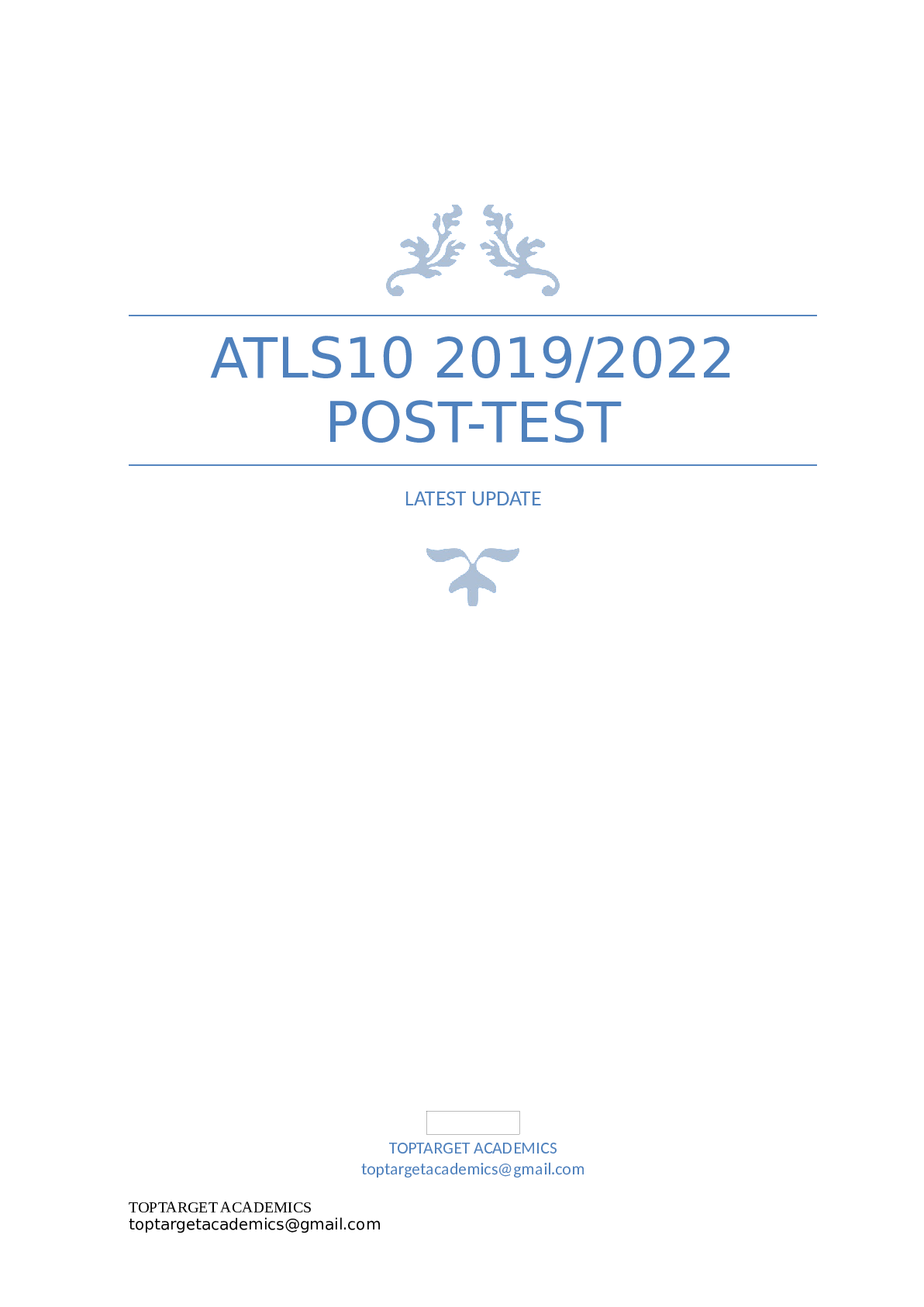
Reviews( 0 )
Document information
Connected school, study & course
About the document
Uploaded On
Jun 02, 2023
Number of pages
15
Written in
Additional information
This document has been written for:
Uploaded
Jun 02, 2023
Downloads
0
Views
135


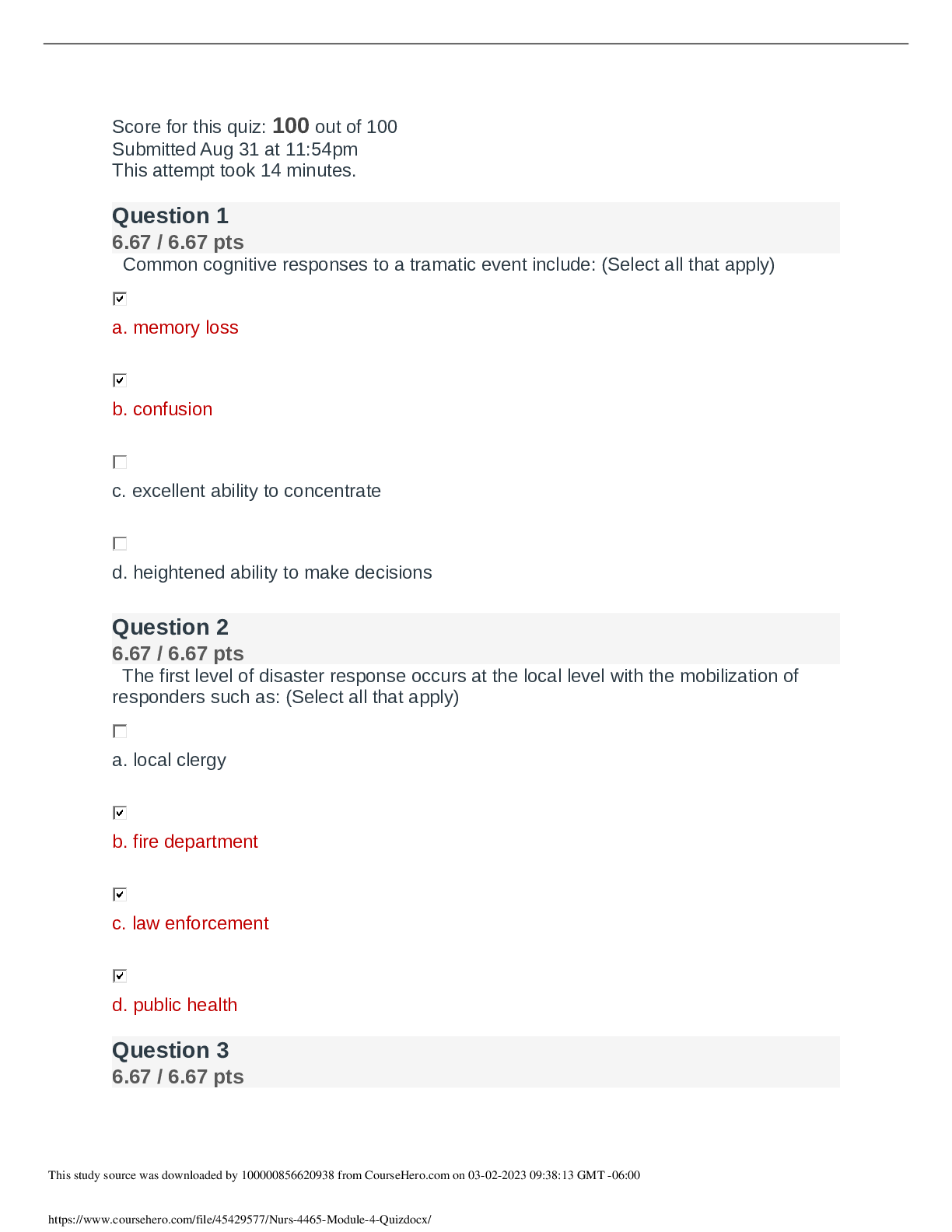
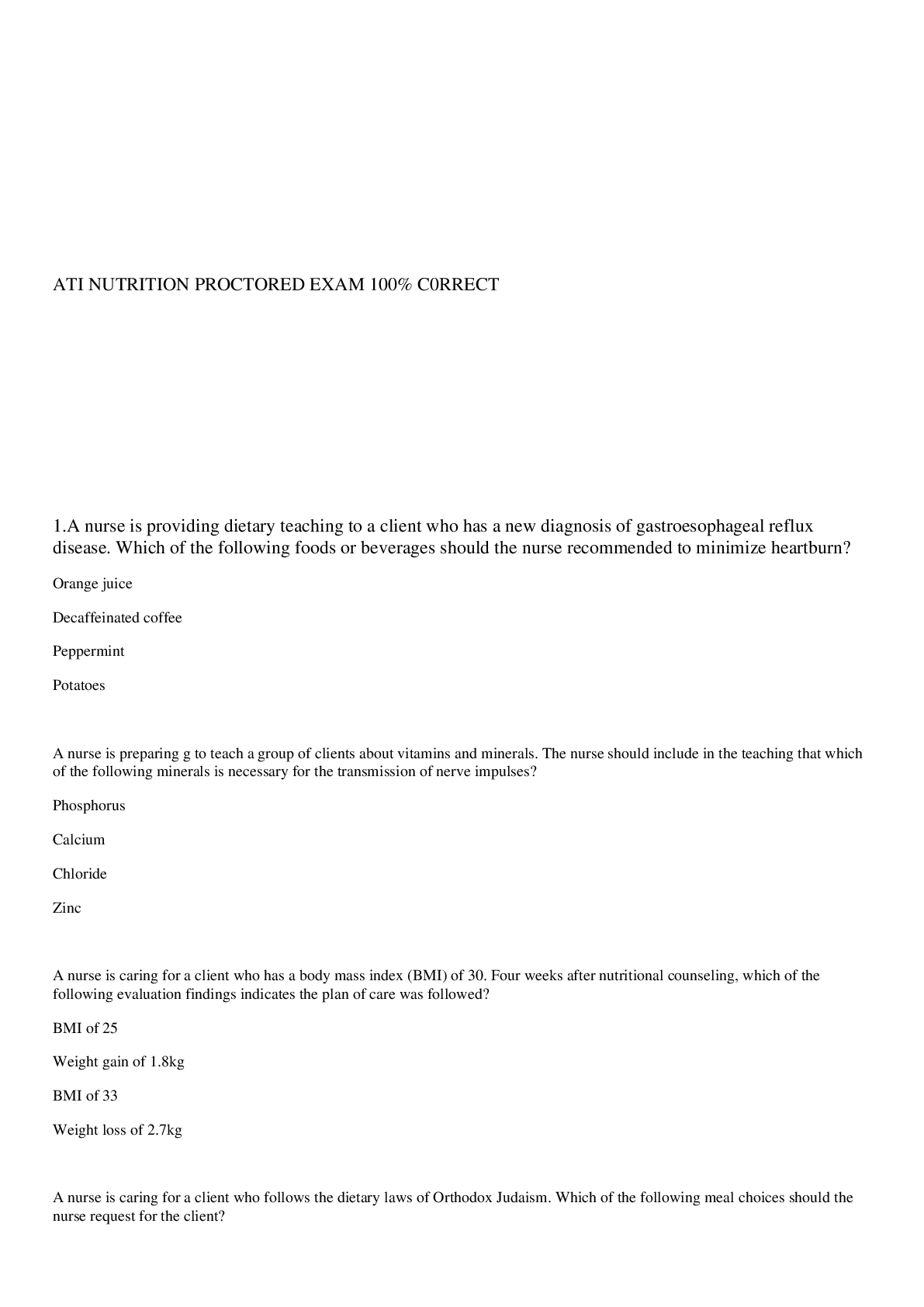
.png)
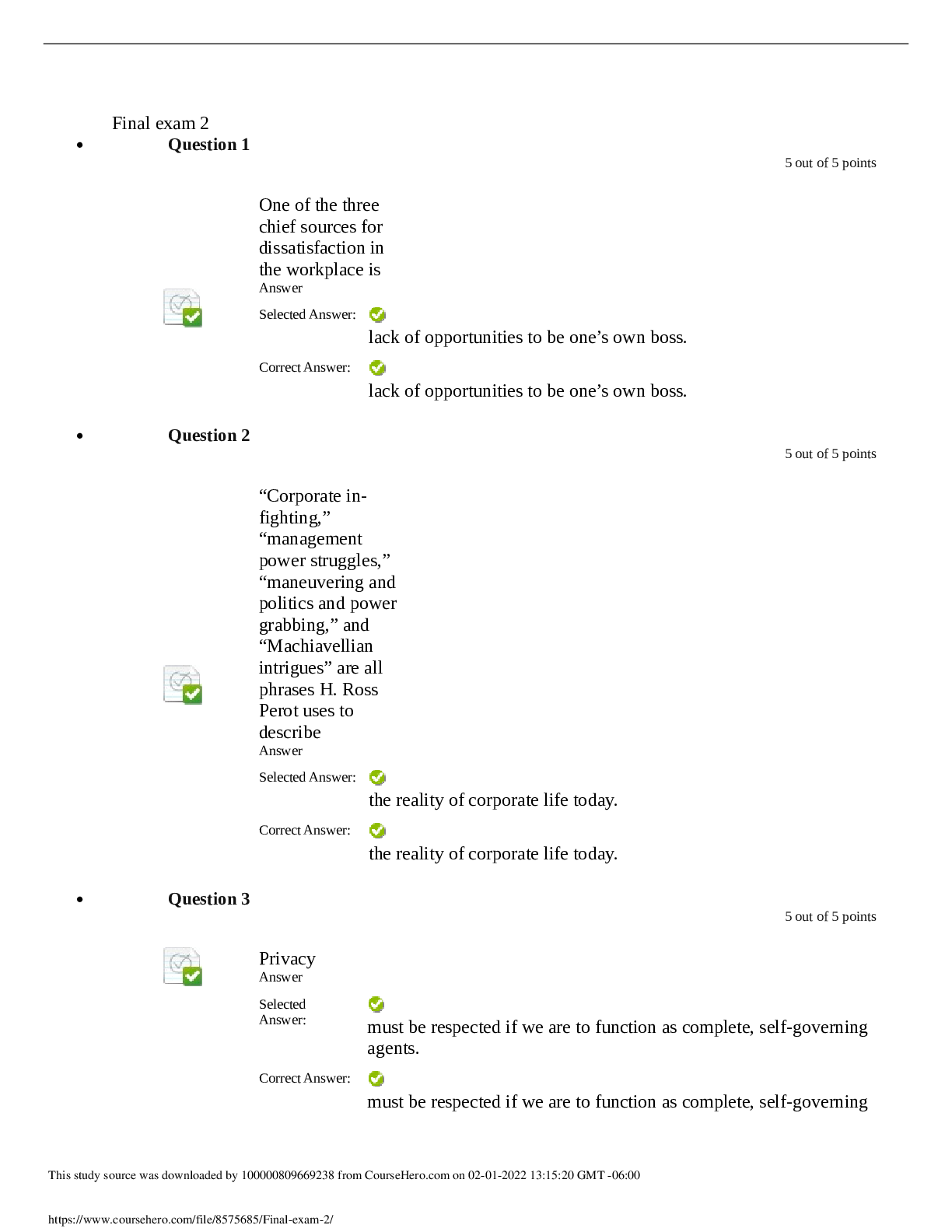
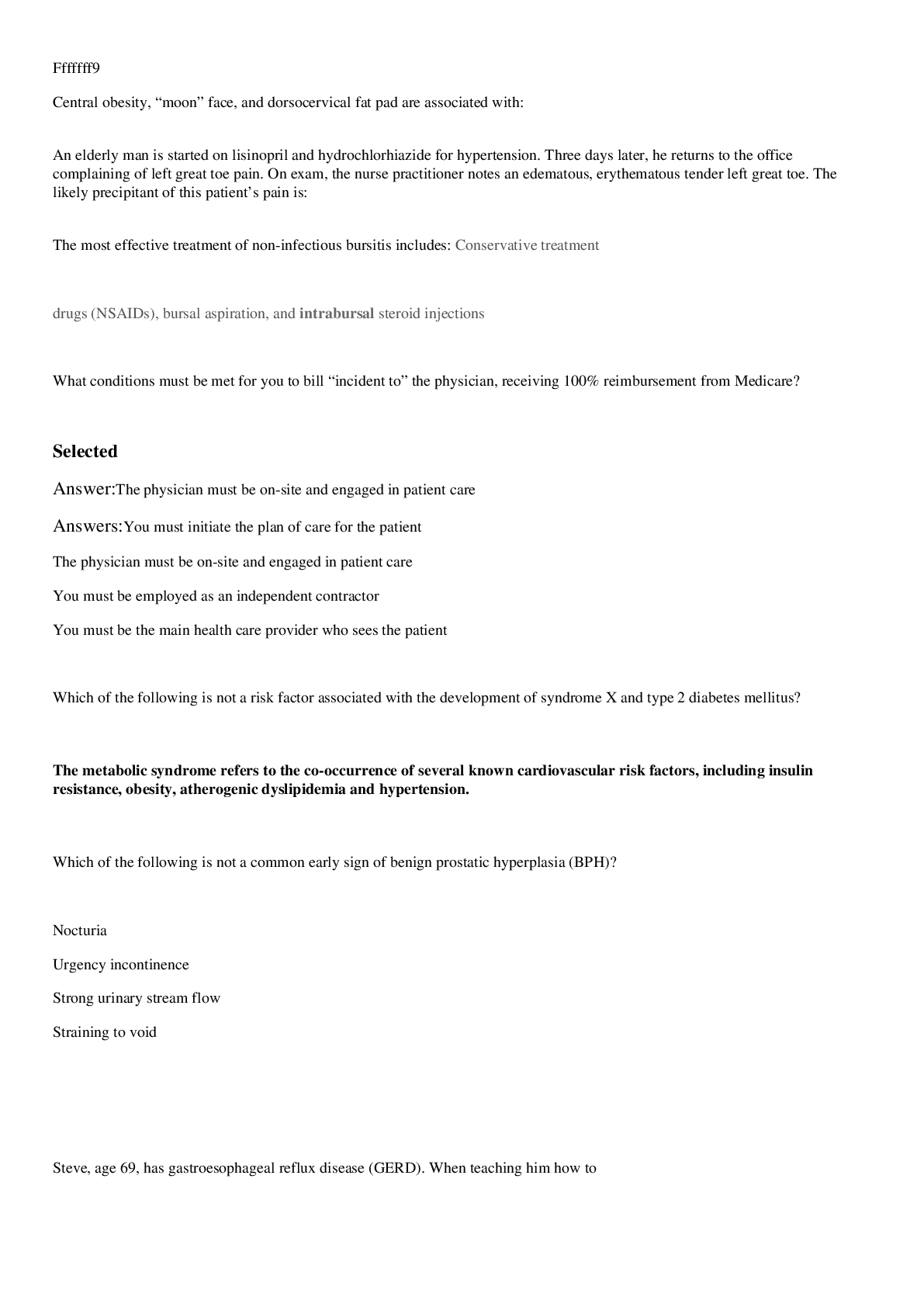

.png)
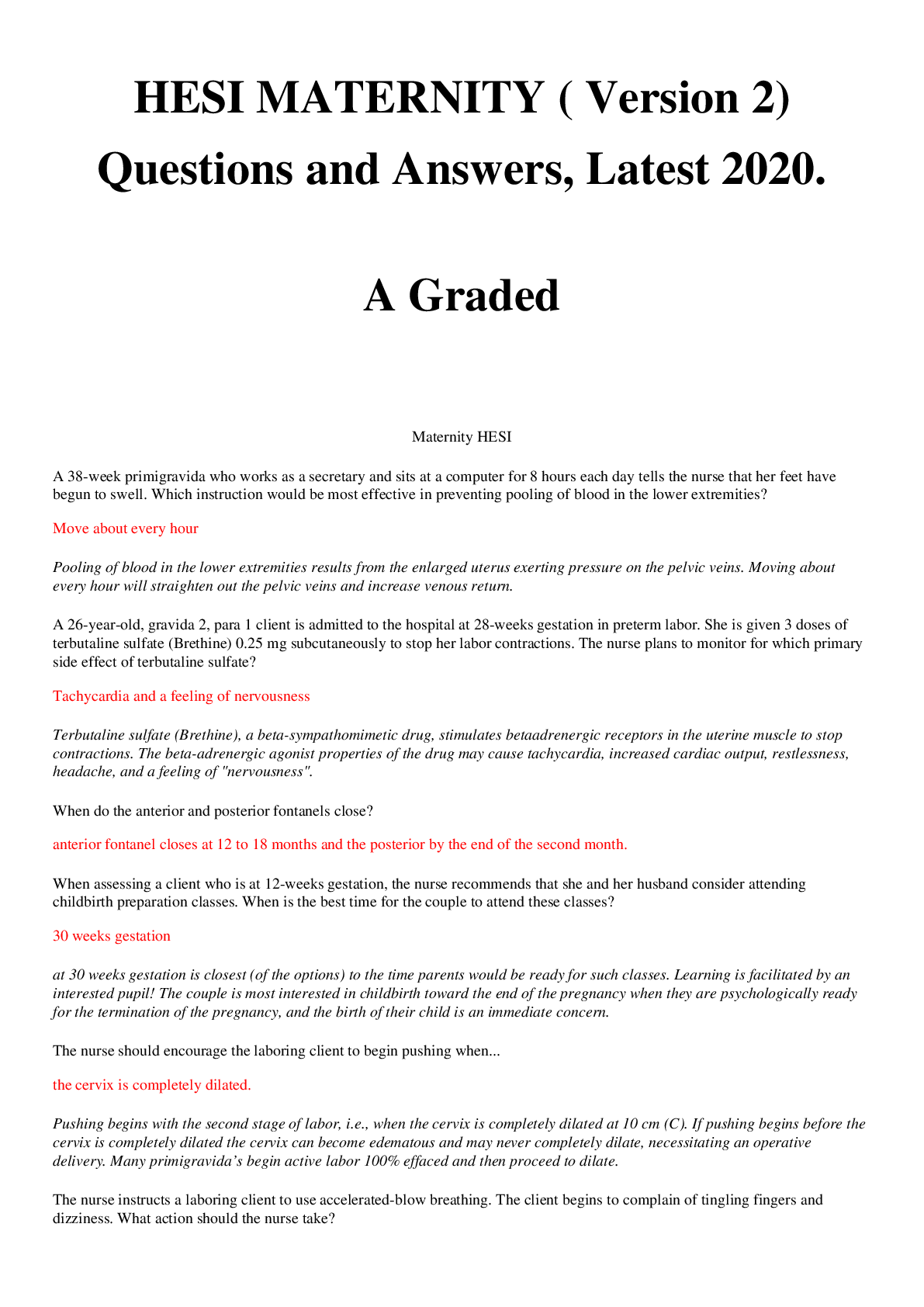

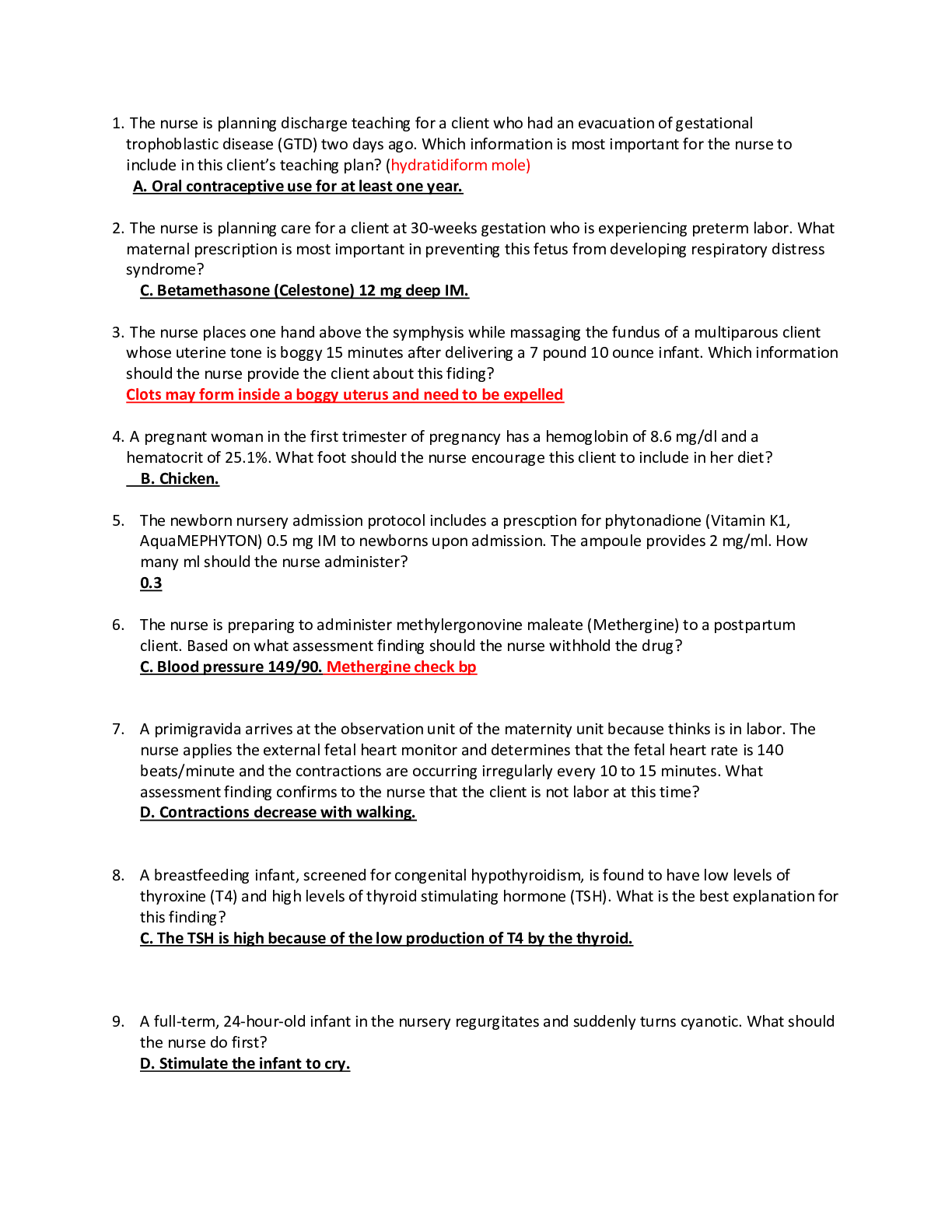
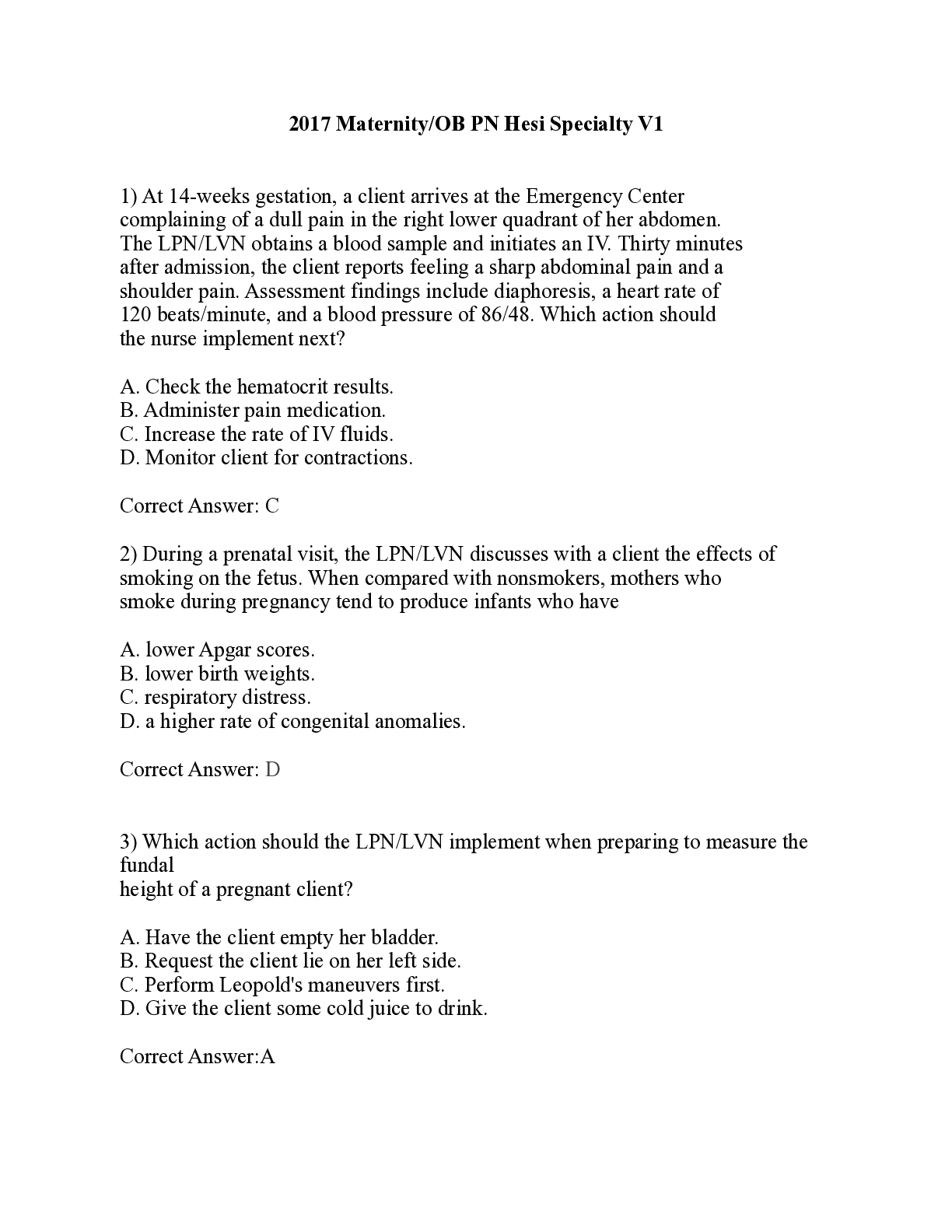

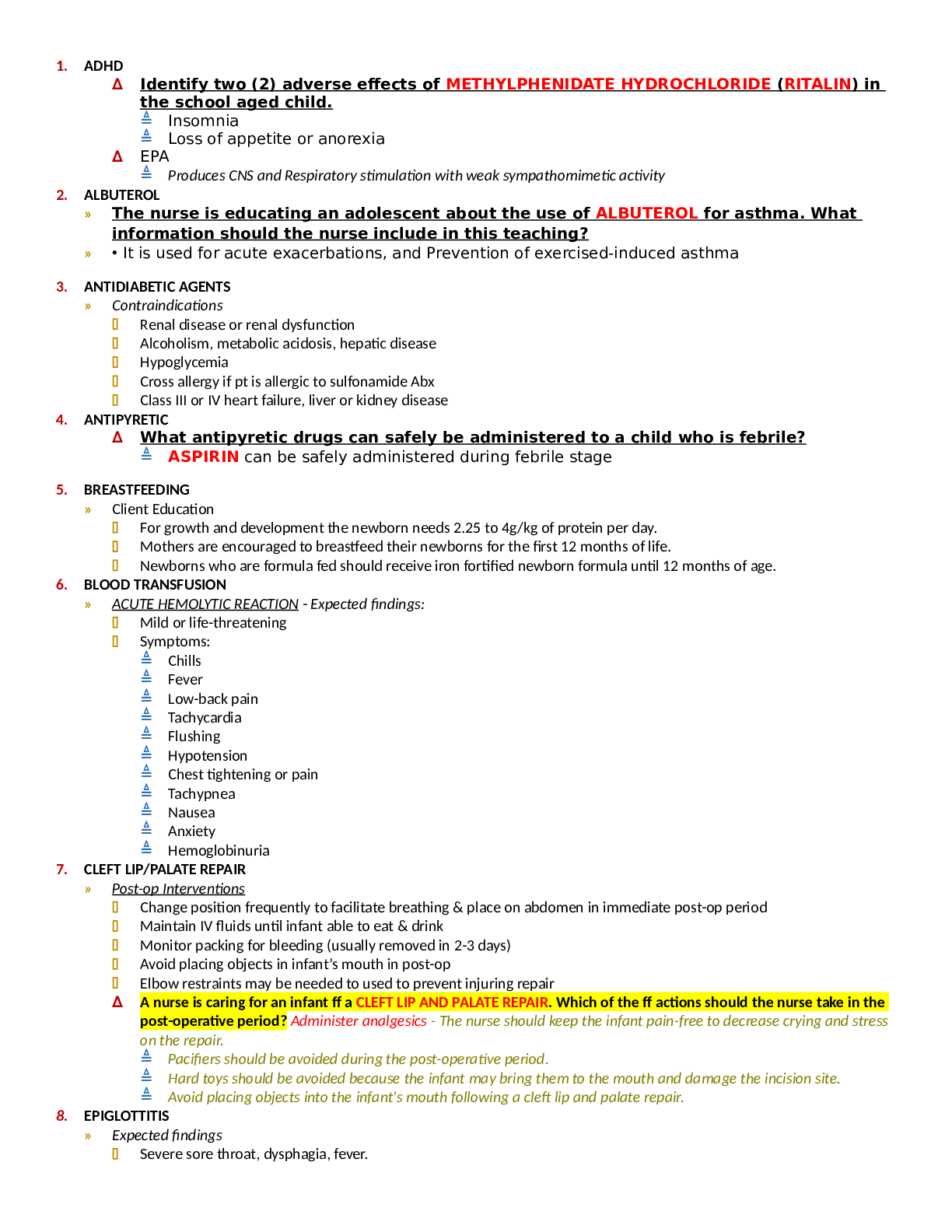
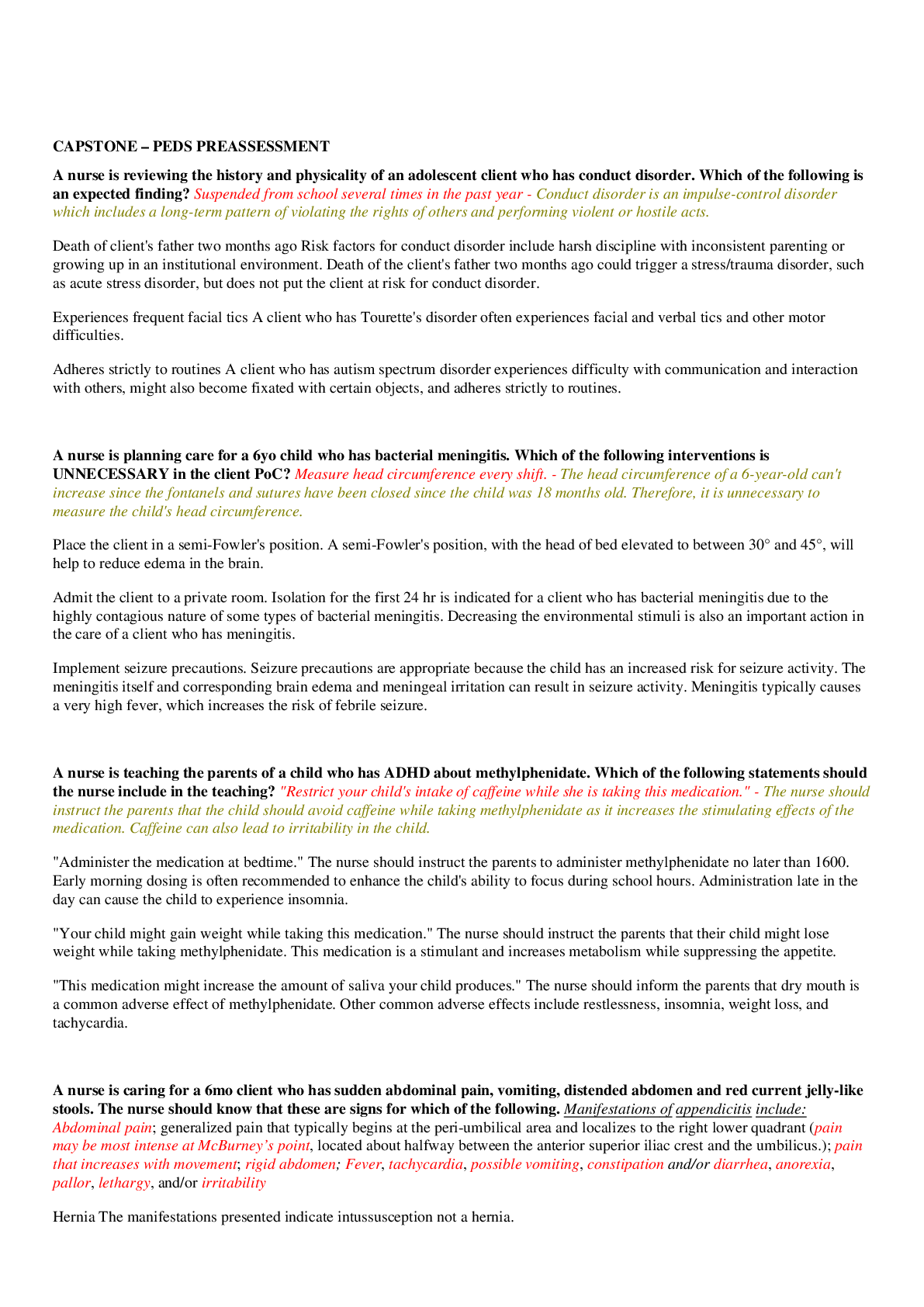






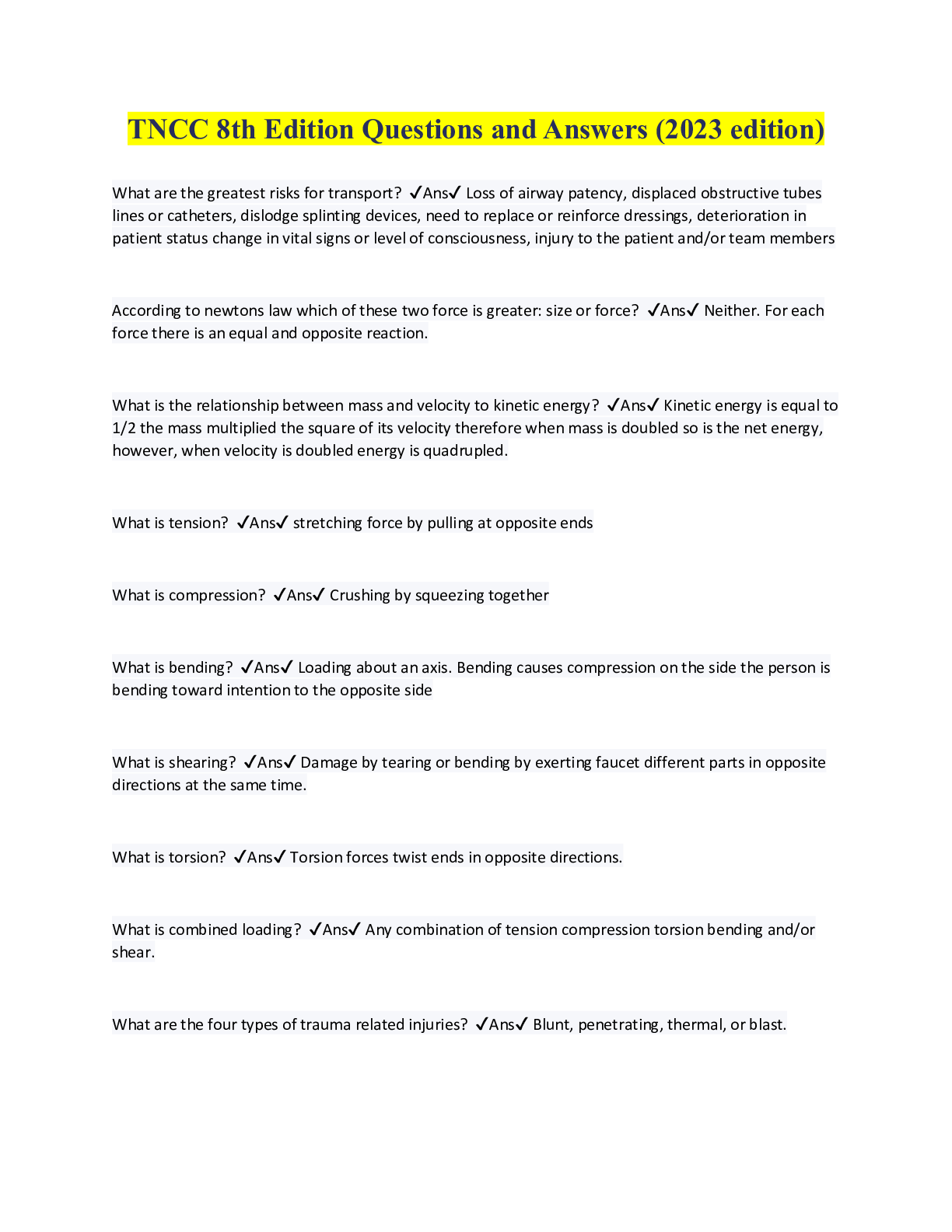
.png)

